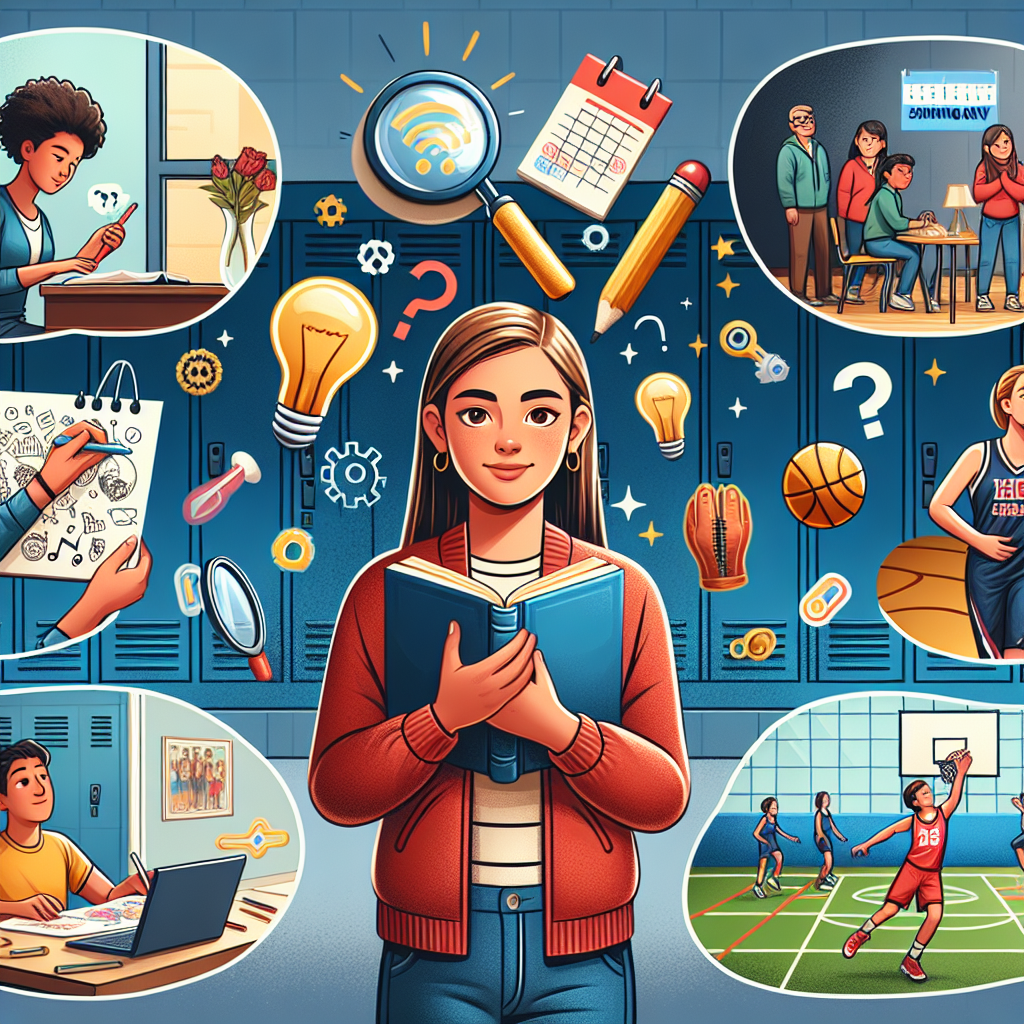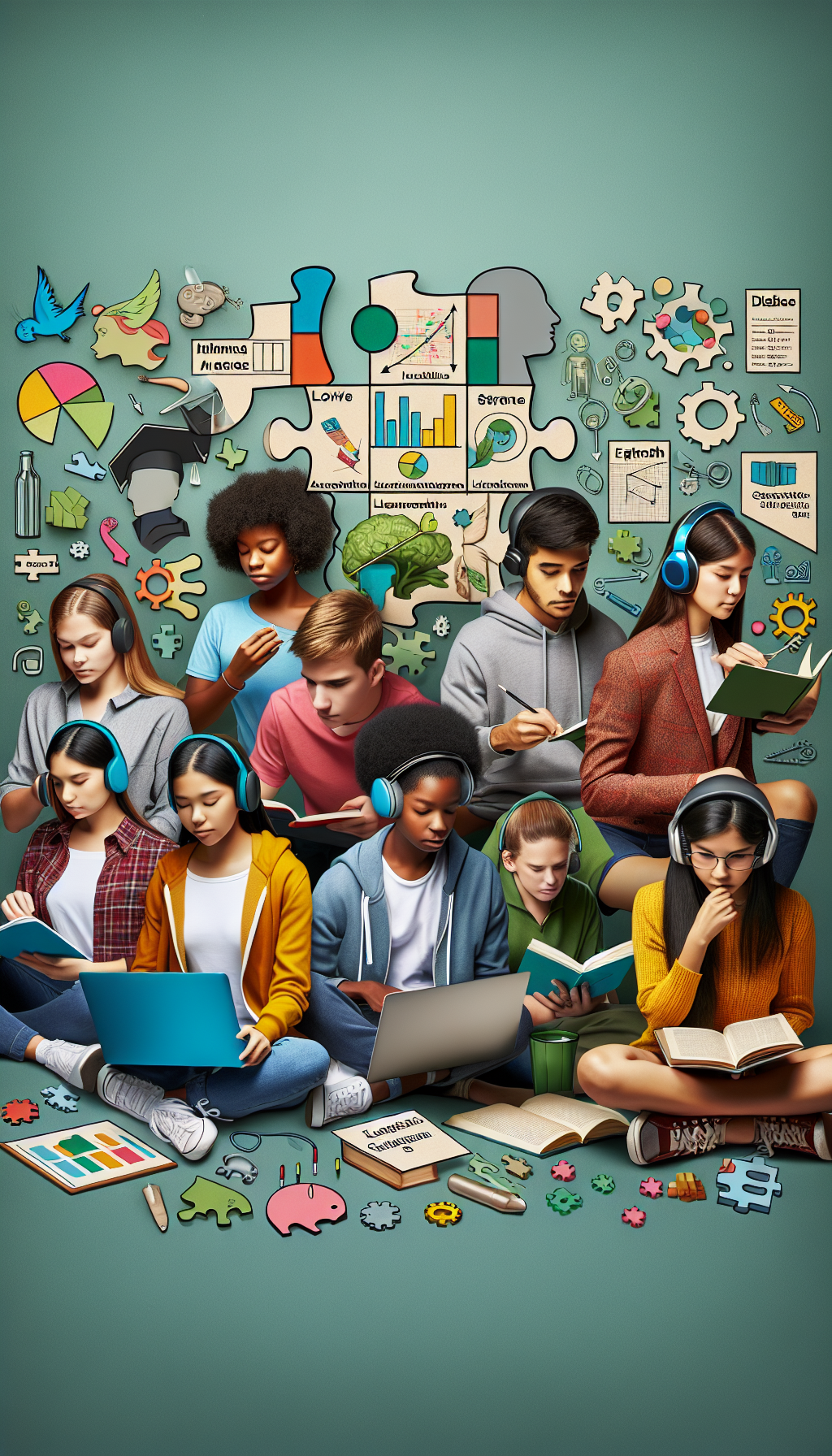🔍 Self-Discovery Learning Styles
This journey isn’t just about finding out what you’re “good at.” It’s a deep dive into self-discovery learning styles—uncovering how you learn best, what truly energizes you, and where your natural talents want to lead you.
🌱 Phase 1: Exploration & Observation Self- Discovery Learning Styles (Grades 9–10)

This phase is all about trying new things and paying attention—no pressure to choose a direction just yet!
🎒 Try Lots of Things
In School:
- Take a wide variety of classes—even ones that feel difficult.
- A struggle in one subject might reveal strengths in another way of thinking.
After School:
- Join clubs, sports, arts, volunteer projects, or part-time jobs.
- Look for moments where you felt energized, challenged, or proud.
On Your Own Time:
- What hobbies do you enjoy so much that you forget to check your phone?
- What topics or activities would you do even if no one asked you to?
✍️Start Reflecting (Journaling Helps!)
Ask yourself:
- When did I lose track of time doing something?
- What felt “easy,” even if it was difficult?
- What have people praised me for that felt natural?
⚡ Discover "Flow"
Flow is that state of being completely in the zone. It happens when:
- You're fully focused.
- Time flies.
- The task is challenging but not frustrating.
- You’re enjoying the process, not just the result.
Start tracking when you experience Flow—it’s a clue to your natural strengths.
🧠Know How You Learn Best
Take a short quiz or reflect:
- Do you learn best by seeing (visual), hearing (auditory), doing (kinesthetic), or reading/writing?
- When do you get frustrated—and why? That could be a clue that you’re using the wrong learning style.
🧭 Ask Others for Insight
- Ask trusted adults: “What do you think I’m naturally good at?”
- Get feedback from classmates in a safe, respectful way.
📌 Start Your Exploration & Observation Worksheet
Simple Text Block inside a Container.
Lorem ipsum dolor sit amet, consectetur adipiscing elit. Sed ac turpis eget eros congue condimentum. Pellentesque nunc erat, gravida eu bibendum vel, vestibulum eu nisi.
Fusce sollicitudin est et arcu commodo ut imperdiet magna pellentesque. Etiam commodo luctus volutpat. Etiam pretium arcu eu nunc interdum in volutpat nisi ornare. Fusce nec dolor orci. Aenean faucibus rutrum tortor vitae lobortis. Nunc iaculis neque et enim rutrum ornare. Quisque viverra rutrum metus, ut lobortis augue lacinia ut. Vestibulum felis augue, fringilla et aliquam a, dignissim ac sapien. Cras eu sem vel massa scelerisque aliquet.
🔎 Phase 2: Deeper Dive into Self-Discovery Learning Styles (Grades 10–11)

Now that you’ve collected clues, let’s connect the dots.
🧬 Use Self-Discovery Tools
These tools are especially helpful for exploring your self-discovery learning styles and identifying strengths that matter most for your growth.
- Personality tests (like mentalup blog, 16 Personalities or MyBlueprint)
- Career quizzes (from school boards or Job Bank Canada)
- Learning style inventories (to dig deeper into how you study best)
📚 Match Strengths to Study Habits
👁️ Visual Learners (love diagrams, charts, color-coding)
If you're a visual learner with strengths in strategic thinking or problem-solving, try:
- Mind maps to organize ideas
- Color-coded notes or flashcards
- Flowcharts to break down complex topics
👂 Auditory Learners (remember what they hear)
If you're an auditory learner with strengths in relationship-building or verbal communication, try:
- Study groups where you explain concepts out loud
- Recording lessons or making your own audio summaries
- Using rhymes or songs to remember facts
✋ Kinesthetic Learners (learn by doing and moving)
If you're a kinesthetic learner with strengths in hands-on problem solving or spatial reasoning, try:
- Building models, using manipulatives, or conducting physical experiments
- Studying while walking or using gestures to reinforce concepts
- Turning review sessions into games or simulations.
📖 Reading/Writing Learners (prefer text-based input and output)
If you're a reading/writing learner with strengths in analysis or independent learning, try:
- Summarizing content in your own words
- Making lists, outlines, or structured notes
- Reading multiple sources to deepen your understanding
🗣️ Verbal Learners (learn through spoken or written words)
If you're a verbal learner with strengths in storytelling, writing, or public speaking, try:
- Writing essays, scripts, or speeches
- Reading aloud or discussing topics in depth
- Using vocabulary-building exercises or storytelling frameworks
🔢 Logical Learners (learn through reasoning and systems)
If you're a logical learner with strengths in critical thinking or math, try:
- Breaking problems into step-by-step solutions
- Finding patterns, sequences, and categories
- Using logic puzzles or coding challenges to build skills
🤝 Social Learners (learn best with others)
If you're a social learner with strengths in collaboration or empathy, try:
- Joining group study sessions or learning circles
- Teaching others or presenting material to a peer
- Engaging in peer editing or cooperative projects
🧘 Solitary Learners (learn best alone)
If you're a solitary learner with strengths in self-reflection or focus, try:
- Journaling or independent study plans
- Setting personal learning goals and tracking progress
- Creating a quiet, distraction-free environment to go deep
🔁 Recreate Your Flow
- Notice when and where you feel “in the zone.” Morning? Quiet space? Hands-on tasks?
- Organize your study time around those conditions.
🗂 Apply Strengths to Schoolwork
- Strong in communication? Lean into essays, debates, and presentations.
- Strong in analysis? You might thrive on research projects or experiments.
- Strong in verbal learning? Use creative writing, storytelling, or speech competitions.
- Strong in logical reasoning? Solve math challenges, engage in coding, or build systems.
- Strong in social learning? Participate in group projects, peer tutoring, or class discussions.
- Strong in solitary learning? Pursue independent research, reflective writing, or personal goal tracking.
⏰ Customize Your Schedule
Match your peak energy times to tasks that require effort. Save easier tasks for later in the day.
🧑🏫 Learn from Mentors & Role Models
- Interview people in jobs that interest you—ask them how they use their natural strengths.
- Choose role models and figure out what strengths helped them succeed.
🚀 Phase 3: Application & Refinement (Grades 11–12 & Beyond)

Time to apply what you've learned—and keep growing.
🎯 Smart Goals Setting Worksheet Using Your Strengths
Academic Goals:
- “I write best in the morning. I’ll block that time for my essay.”
Personal or Community Goals:
- Use your talents to help others and grow your confidence.
Post-Secondary Planning:
- Choose programs or pathways that let you use your strengths—and allow you to experience Flow.
🌱 Grow Through Challenges
- Face struggles with this mindset: “How can I use my strengths here?”
- Break hard tasks into smaller parts where you can find Flow.
- Learn new skills that support your growth in tough areas.
📓 Keep a Strengths & Flow Portfolio
- Collect reflections, schoolwork, feedback, and journal entries that show your progress.
- Use this as evidence for resumes, interviews, or scholarship applications.
💼 Show Off Your Strengths (Confidently!)
- Learn how to explain not just what you did, but how you did it and why it energized you.
- Network with people who share your interests or career goals.
🧭 Keep the Journey Going
Create a home or classroom culture that supports self-discovery.
✅ Use positive language: “You’re great at noticing patterns” vs. “You’re bad at math.”
✅ Offer choices in assignments to let students play to their strengths.
✅ Celebrate a wide range of talents, including those revealed through self-discovery learning styles, not just traditional academic skills.
✅ Ask questions like:
- “What energized you this week?”
- “When did you feel in the zone?”
- “What did you learn about yourself?”
🌿 Final Thought
Self-discovery is ongoing. Whether you're refining your study habits or choosing your future path, understanding your self-discovery learning styles help you thrive.
Keep observing, reflecting, and refining.
It doesn’t stop when you pick a major or land your first job. Keep observing, reflecting, and refining. The more you understand what makes you come alive, the more you’ll thrive in school, work, and life.